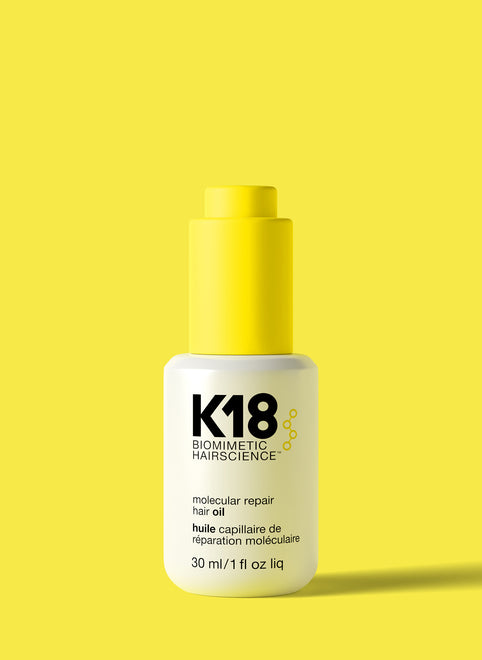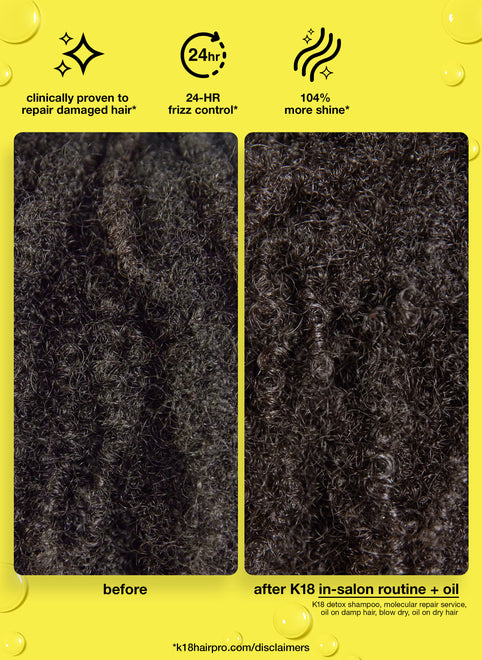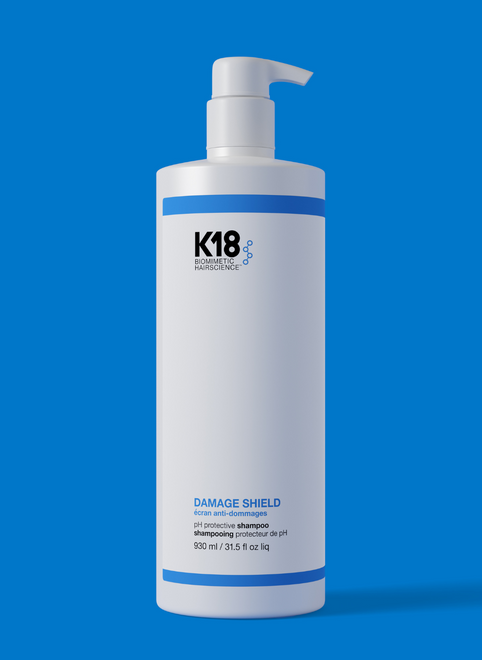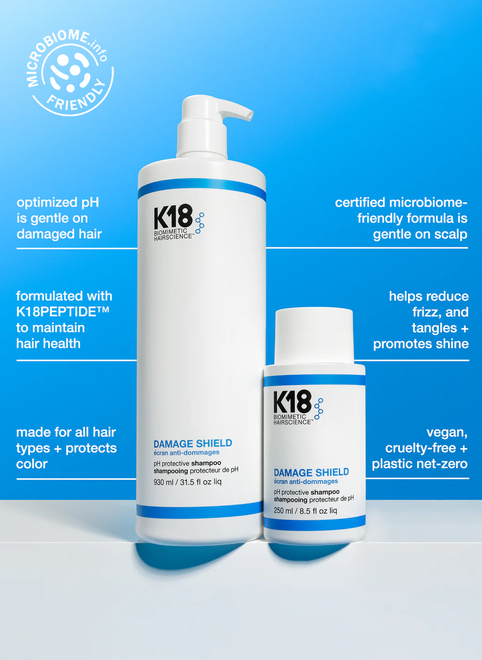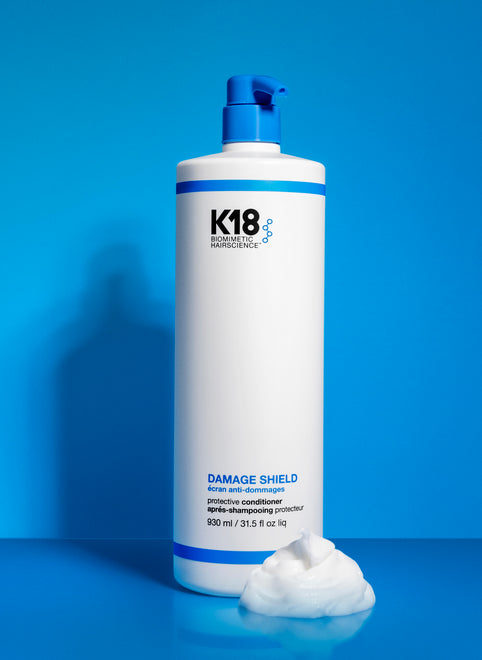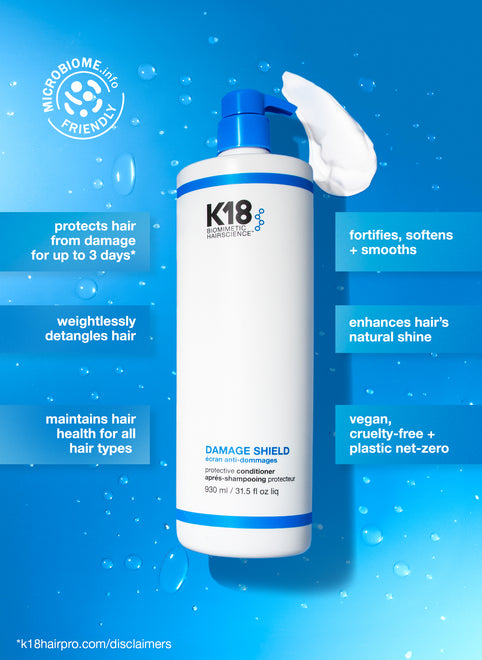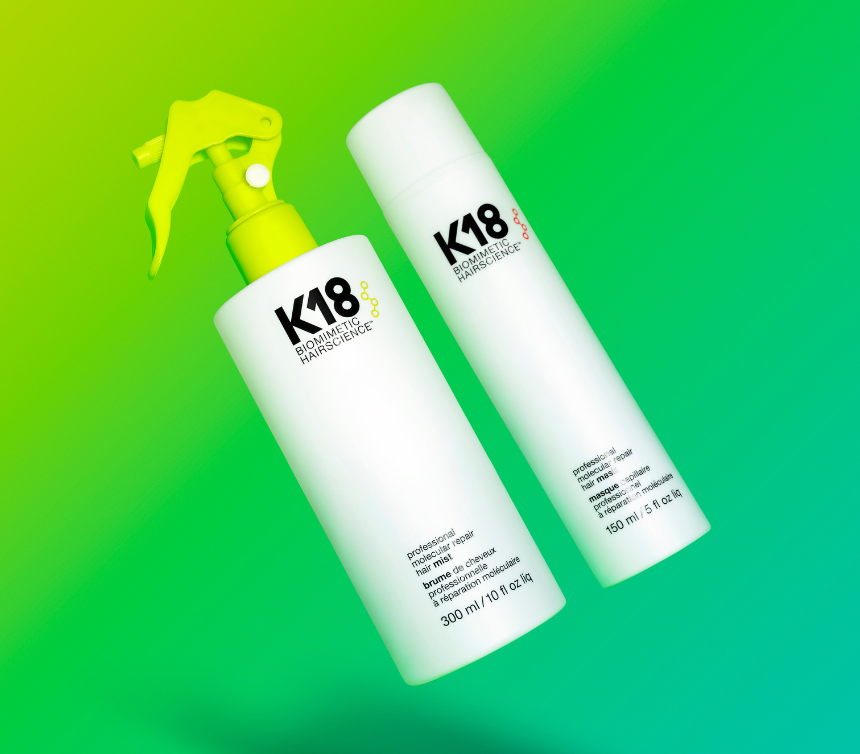One of the easiest ways to understand hair elasticity is to picture in your mind a rubber band. When a strong, minimally used elastic band is stretched, it springs back to its original shape when you let go. A weak and over-manipulated elastic will barely bounce back at all. The same goes for hair—healthy strands spring back instantly when tugged on, but damaged hair does not. Just like the weak elastic, it remains flimsy and stretched out.
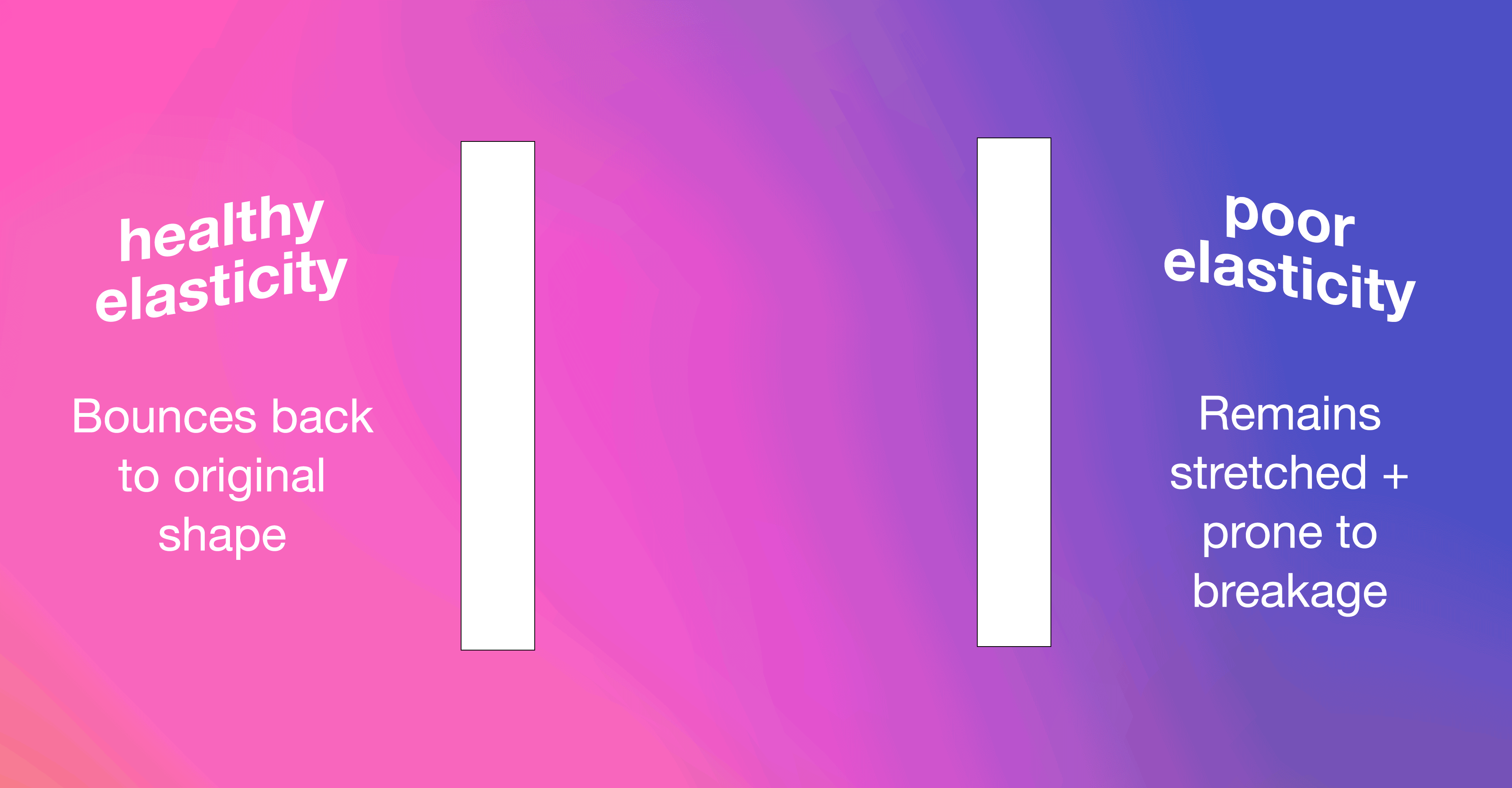
K18’s Head of Advanced Research, Fraser Bell, explains.
“Elasticity comes from deep within your hair. When the hair is damaged and the disulfide bonds and polypeptide chains (which are responsible for the strength of the hair) are broken, your strands become less elastic and easily stretch and deform,” he says. “They won’t spring back to their original shape and position nearly as easily.”
Healthy hair does the exact opposite.
“Undamaged hair with lots of disulfide bonds present and an intact polypeptide structure bounces right back to its original shape when you pull on it and it’s much harder to stretch,” says Bell.
The main takeaway? Elastic hair is healthy hair and stretchy hair (that doesn’t bounce back) is a telltale sign of damage.
signs of high (aka healthy) hair elasticity
If you’re gentle on hair and regularly incorporate molecular repair into your hair routine to combat damage, then you should have a healthy level of elasticity.
This may look like:
Bouncy + resilient hair
Keeps style + shape
Minimal frizz + flyaways
Smooth + shiny strands
Lack of split ends + breakage
These are all signs that your hair elasticity is healthy and resilient to damage. If you’re experiencing less than optimal elasticity, don’t worry: molecular repair can target that damage and fortify weak, stretched-out strands. Let’s talk about how.
causes of poor hair elasticity + how to repair it
Healthy elasticity (hair’s resilience and ability to bounce back) can be impacted by a multitude of factors, including damage from bleach and color, chemical services, using too much heat, mechanical styling, or environmental aggressors. In other words: basically anything that can harm the hair and break disulfide bonds and polypeptide chains.
Damaged strands with poor elasticity may look like:
Dry, dull, strands
Frizz + flyaways
Split ends + breakage
Difficult to detangle
Now for the good news! Broken bonds can be repaired and hair elasticity restored with the right products. Here are our recommendations for restoring elasticity to damaged hair. The key is to repair hair deep within its innermost layers to address and prevent concerns that show up on the outside, like those mentioned above.
The very first thing to add to your routine to improve loss of elasticity is K18’s leave-in molecular repair hair mask. It contains the K18-patented K18PEPTIDE™ which penetrates hair and reverses damage on the molecular level in just 4 minutes* by reconnecting polypeptide chains and disulfide bonds that get broken due to the aforementioned damaging factors. Hair strength and elasticity come from the polypeptide chains the K18PEPTIDE™ is uniquely able to target.
For maximum molecular repair results, follow the molecular repair mask with K18’s award-winning molecular repair hair oil, which addresses damage at the innermost layers of hair using the same biomimetic peptide while tackling signs of damage that appear on the outside of hair.
Apply the mask first on clean, damp hair and wait 4 minutes. Then apply the molecular repair hair oil to your still-damp hair. Wait 4 minutes for the peptide to penetrate again. The oil also contains up to 450° F of heat protection to help prevent further damage from occurring while styling.
These highly concentrated formulas essentially hit reset on your hair’s strength and elasticity.
To maintain results and protect hair from daily damaging elements that can impact elasticity, we recommend using DAMAGE SHIELD shampoo + conditioner between mask days.


.png?v=1706135824299&transform=resize=150x150)
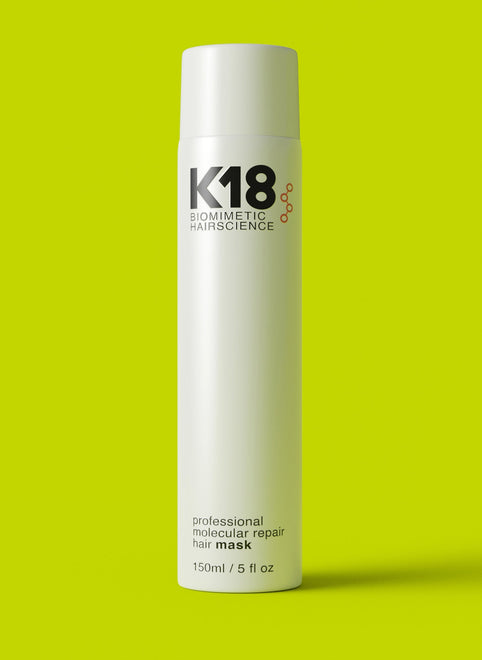
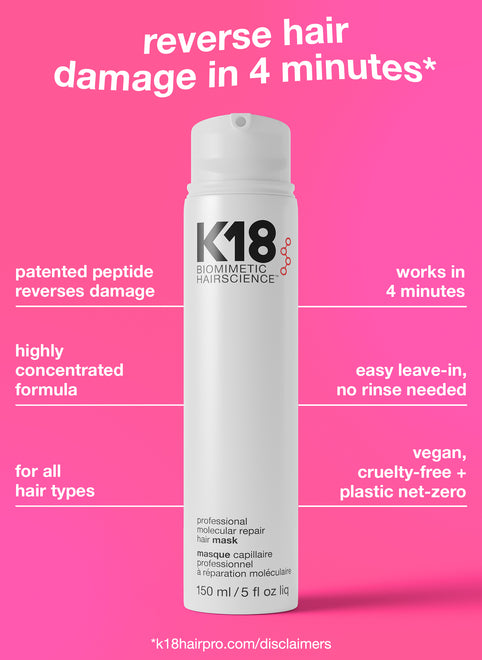
.png?v=1695413339252&transform=resize=150x150)
